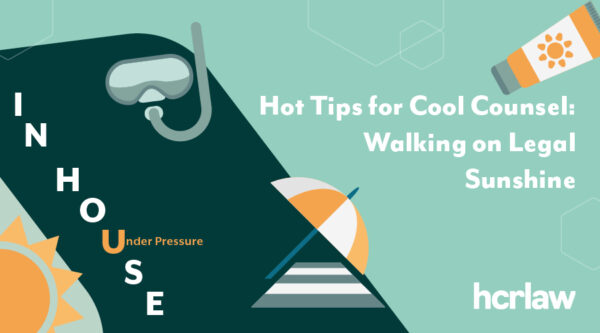

On 15 April 2020, the Treasury issued a Direction to HMRC (under powers conferred by the Coronavirus Act 2020), containing authority and instructions for making payments under the Scheme. The guidance and Direction have addressed a number of key questions that will be helpful for employers when considering the applicability of the Scheme.
Eligibility
The key change announced on 15 April 2020 is that the Government has extended the qualifying date for the Scheme from 28 February 2020 to 19 March 2020.
This means that employees who were employed on 19 March 2020 (previously 28 February 2020) are eligible for furlough, provided the employer had submitted real time information payroll data by that date. This means that employers may now be able to furlough a larger pool of their workforce than originally anticipated.
This change of date also applies to workers that have been made redundant or dismissed on or before 28 February 2020. They will still be eligible to be furloughed even if they are not reinstated by the employer until after 19 March 2020.
Whilst the majority of the powers detailed in the Direction are already set out in the current form of the guidance, there are a couple of further key points which employers should be aware of:
- To claim furlough, the employer and the employee must have agreed in writing (which may be in an electronic form such as an email) that the employee will cease all work in relation to their employment whilst on furlough leave. This is significant as the guidance previously only required notification. This may mean that some employers who have already furloughed staff may not have satisfied this requirement.
- A director who is furloughed can only undertake very limited work where it is necessary to fulfil a duty or other obligation arising from an Act of Parliament, relating to the filing of company’s accounts or provision of other information relating to the administration of the company. This is a far narrower interpretation of directors’ duties than was anticipated.
- An employer cannot claim for any salary which is “conditional on any matter”. This may exclude any salary payments which the parties have agreed are conditional on the Scheme paying out, for example.
The full Direction can be accessed here.
Furlough and sick pay
Furloughing sick employees
To date, the guidance has been clear that employers are unable to claim furlough pay under the Scheme for employees that are off sick or self-isolating, as they are eligible for Statutory Sick Pay. However, the updated guidance has clarified that, whilst short term illness or self-isolation should not be a consideration for employers when deciding whether or not to furlough an employee, employees that are already off sick are still eligible to be furloughed in the same way as other employees.
If an employer decides to furlough a sick employee, once furloughed their sick pay would cease and they would be classified instead as a furloughed employee. The key take home from the updated guidance is that an employer can switch employees from sick pay to furlough and vice versa.
Employers are also entitled to furlough employees who are being shielded or absent on long-term sick leave, although it is up to employers to decide whether or not to do so. Employers can claim funds under the Scheme and the SSP rebate scheme for the employee, but not for the same period of time.
Furloughed employees that become sick
The updated guidance has also clarified the position on what happens if a furloughed employee becomes sick whilst furloughed.
As furloughed employees retain their statutory rights, including their right to SSP, furloughed employees must be paid at least SSP in the event that they fall ill whilst on furlough leave. It will, however, be up to employers to decide whether to move these employees onto SSP, or to keep them on furlough leave, at their furloughed rate of pay.
If the employer decides to move the employee to SSP, the employer will be responsible for paying the SSP in the usual way, and will not be able to claim for the rebate under the Scheme during the period of sick leave. The employer may however qualify for a rebate for up to two weeks of SSP. If an employer instead decides to continue to pay the sick furloughed employee on the furloughed rate, they remain eligible to claim for these costs through the Scheme.
Furlough and TUPE
The updated guidance has confirmed that a new employer is eligible to claim under the Scheme in respect of the employees of a previous business transferred under TUPE (or the PAYE business succession rules) after 19 March 2020.
This is great news for businesses that were undergoing, or were about to undergo, a restructure when the pandemic struck. We hope that this will now provide reassurance that transactions can continue.
Some clarification
The updated guidance has also clarified a number of further points for employers:
- Employers can furlough employees on all categories of visa, and employees with certain work visas will not be regarded as breaching their visa conditions if they receive funds under the Scheme.
- An employer can only reclaim its National Insurance and pension contributions in respect of the level of an employee’s subsidised furloughed salary (i.e. 80% or £2500, whichever is lower), and not their normal salary.
- Grants for pension contributions can be claimed by the employer under the Scheme up to a maximum of 3% of qualifying earnings, provided that the employer will pay the whole amount claimed to a pension scheme for the employee as an employer contribution.
- Employees cannot work or volunteer for an organisation that is linked or associated with the employer that has furloughed them during furlough leave.
- Businesses that engaged in payroll consolidation schemes (i.e. to move their employees from multiple payrolls into one) after 19 March 2020 can place their employees on furlough.
- The entire grant paid to the employer under the Scheme must be paid to the employee as a form of money. The employer cannot make any deductions for fees or administration charges, nor can it be netted off to pay for the provision of benefits or a salary sacrifice scheme.
- Claims under the Scheme for employees returning from statutory leave (i.e. maternity leave, paternity leave, shared parental leave, adoption leave, sick leave and parental bereavement leave) should be calculated against their salary, before tax, and not against the pay they received whilst on statutory leave.
- If an employee went on unpaid leave on or before 28 February 2020, they cannot be furloughed until after the date on which it was agreed that they would return from unpaid leave.
- Different procedures will apply when an employer enters the information into the portal depending on whether the employer is furloughing less than 100 staff, or more than 100 staff.
A helpful update, although gaps still remain
The latest guidance and Treasury Direction provide some further clarity for employers about the Scheme. There still remains, however, a number of uncertainties, not least in respect of the interaction between furlough leave and annual leave entitlements. Watch this space.
See our Covid-19 Hub for other furlough or Coronavirus Job Retention Scheme Q&As.










